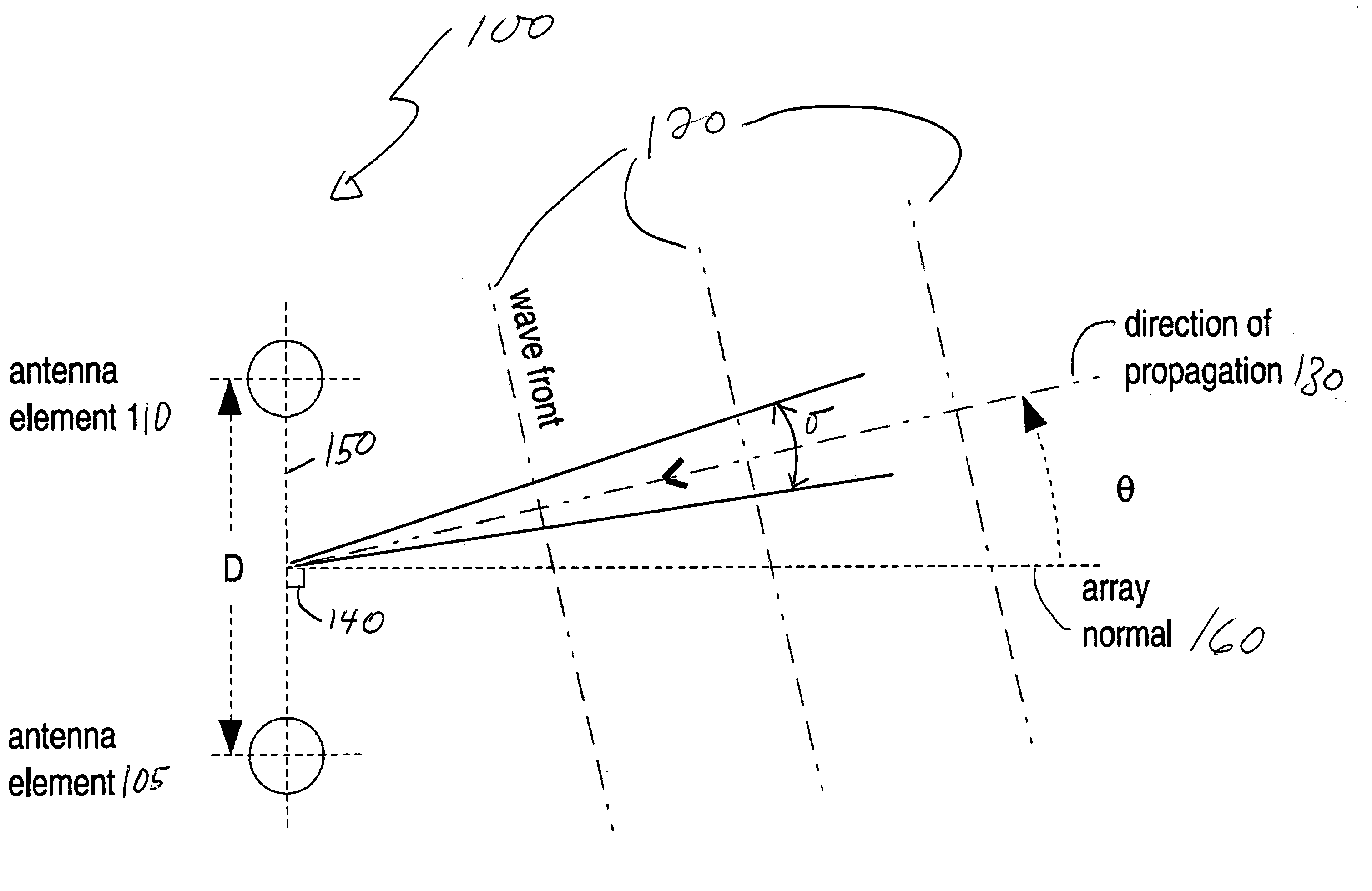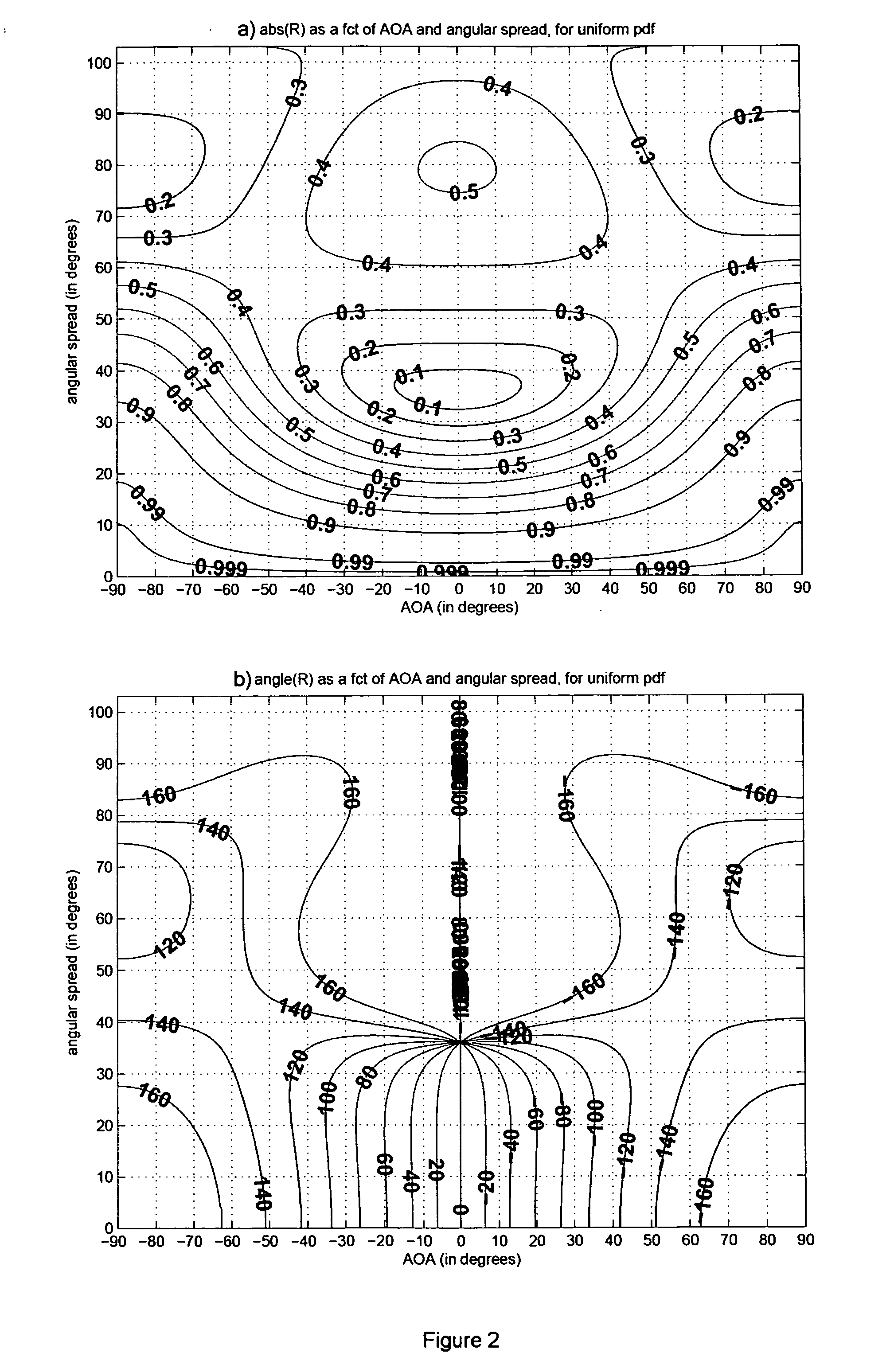Estimation of angular parameters of a signal at an antenna array
a technology of antenna array and angular parameters, which is applied in the direction of antennas, diversity/multi-antenna systems, transmission monitoring, etc., can solve the problems of high processing capacity, time-consuming and laborious, and the current smart antenna technique cannot be said to be superior to others for all considered transmission scenarios, etc., to achieve low complexity
- Summary
- Abstract
- Description
- Claims
- Application Information
AI Technical Summary
Benefits of technology
Problems solved by technology
Method used
Image
Examples
Embodiment Construction
[0037]The innovative teachings of the present invention will be described with particular reference to various exemplary uses and aspects of the preferred embodiments. However, it should be understood that these embodiments provide only a few examples of the many advantageous uses of the innovative teachings of the invention. In general, statements made in the specification of the present application do not necessarily limit any of the various claimed aspects of the present invention. Moreover, some statements may apply to some inventive features but not to others. In the description of the figures, like numerals represent like elements of the invention.
[0038]The present invention provides a method and an antenna array system taking advantage of mathematical models to provide knowledge of characteristics of radio channels to improve the use of antenna arrays. These mathematical models, for various types of radio channels, characterized by the manner in which the channels may dispers...
PUM
 Login to View More
Login to View More Abstract
Description
Claims
Application Information
 Login to View More
Login to View More - R&D
- Intellectual Property
- Life Sciences
- Materials
- Tech Scout
- Unparalleled Data Quality
- Higher Quality Content
- 60% Fewer Hallucinations
Browse by: Latest US Patents, China's latest patents, Technical Efficacy Thesaurus, Application Domain, Technology Topic, Popular Technical Reports.
© 2025 PatSnap. All rights reserved.Legal|Privacy policy|Modern Slavery Act Transparency Statement|Sitemap|About US| Contact US: help@patsnap.com



